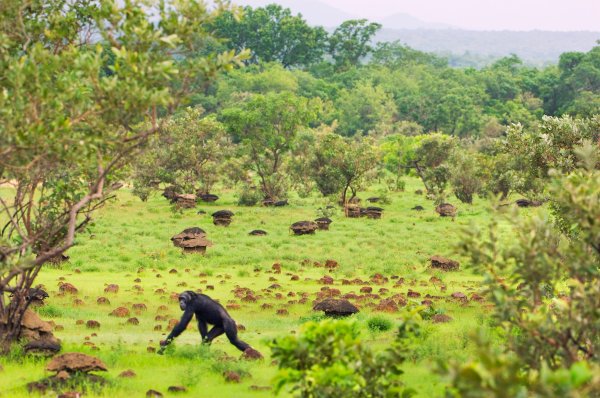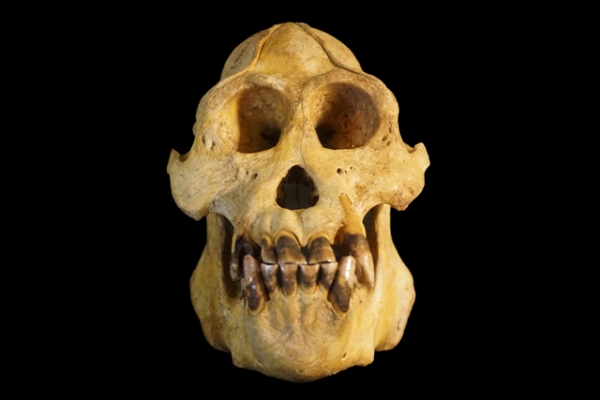A study was published several days ago in the journal Proceedings of the Royal Society B examining the social relationships among 13 mountain gorilla groups in Rwadna over 12 years. Typically, mountain gorillas have social groups of 12 to 20 individuals. A group of this size often yields the most diversity in relationships. Mountain gorillas... Continue Reading →
Three Southeast Asian Langurs Are Distinctly Different Species
The newly described East Sumatran banded langur (Presbytis percura) qualifies as critically endangered—it’s now one of the rarest and most imperiled primates. Photograph by Andie Ang New findings, published Scientific Reports, have identified that langurs found in Myanmar, Thailand, Malaysia, Singapore, and Indonesia, are actually three distinct species. By studying DNA found in the monkey's... Continue Reading →
Chimpanzees Console A Bereaving Mother
Zoë Goldsborough, of Utrecht University, and crew have published an open access special feature in the journal Primates. Their paper documents the observation of chimpanzees consoling a bereaving chimpanzee mother who experienced a still birth. This is a fantastic study that builds on our prior knowledge that chimpanzees do mourn the death of a group member... Continue Reading →
Positive news on the conservation front, where the number of mountain gorillas is over a 1,000 individuals. The survey found the Virunga population has risen to 604 among in 41 social groups... Compared to the 480 individuals counted in the last survey in 2010. The only other place mountain gorillas survive is in Uganda’s Bwindi... Continue Reading →
On Fongoli Chimpanzee Survival Strategies & Implications of Early Human Evolution
The Fongoli savanna in southeast Senegal offers a unique ecosystem. Temperatures can rise above 110 degrees Fahrenheit with brush fires sweeping across. The chimpanzees who live on these savannas weren't well understood. Erin Wessling at the Max Planck Institute for Evolutionary Anthropology studied these chimpanzees. She compared these chimps to forest chimpanzees. The Fongoli savanna... Continue Reading →
Orangutans Observed Treating Pain
Behavioral ecologist Helen Morrogh-Bernard of the Borneo Nature Foundation spent 20,000 hours studying 10 Orangutans of in the Sabangau Peat Swamp Forest in Central Kalimantan, Indonesia. Her results are published here. She first observed a female orangutan in 2005 chew a particular plant that isn't part of their diet. That individual and others chew the... Continue Reading →
The Newly Discovered And Nearly Extinct Tapanuli Orangutan Species
Up to today, there were two known Orangutan species, both critically endangered. There are about 4,000 more Sumatran orangutans (Pongo abelii) than Bornean orangutans (Pongo pygmaeus) currently living in the Indonesian rainforest. A new orangutan family member, the Tapanuli orangutans (Pongo tapanuliensis), was described in a paper published Thursday in Current Biology. And with less than 800 individuals, that makes... Continue Reading →
Monkey Teaching A Human
Check out this video of a monkey teaching a human how to crush a leaf.
Brazilian Capuchin Stone Tool Use
Researchers from Oxford University, working in Brazil, found new archaeological evidence suggests that Brazilian capuchins have been using stone tools to crack open cashew nuts for at least 700 years. Researchers say, to date, they have found the earliest archaeological examples of monkey tool use outside of Africa. In their paper, published in Current Biology,... Continue Reading →
Mysterious Chimpanzee Stone Throwing Ritual
In the above video you will see a large male chimp approaching a tree. He pauses for a second, then glances around, grabs a huge rock and flings it full force at the tree trunk. We have known about this. Prior studies have shown or provided anecdotes of wild chimpanzees throwing and banging stones in... Continue Reading →





You must be logged in to post a comment.